Everything you need to know about left-handed guitars
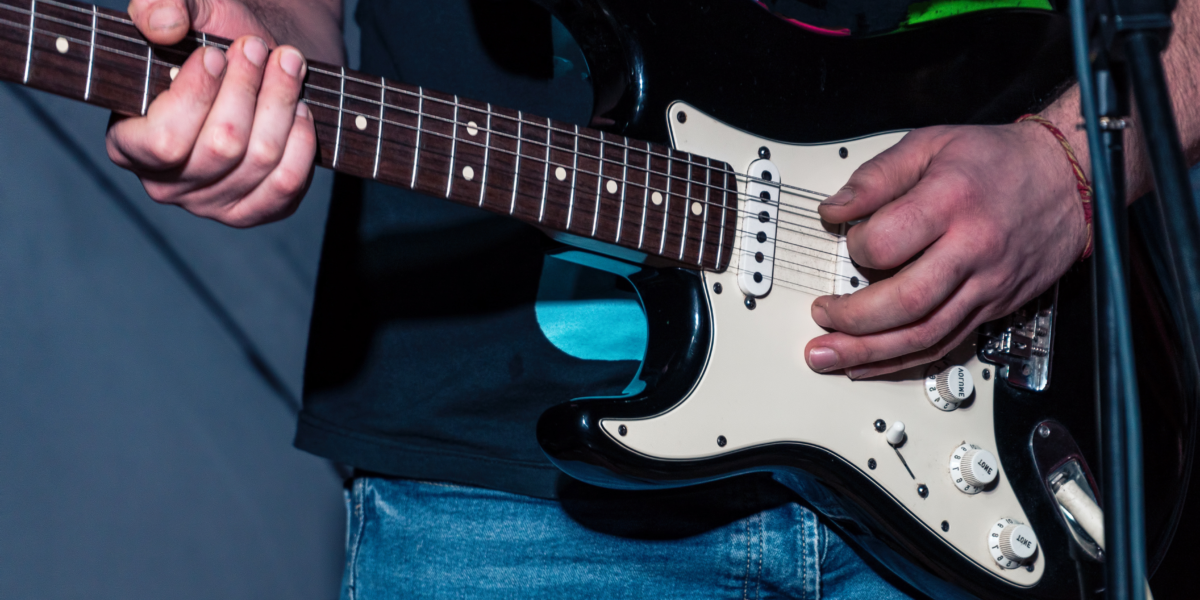
Left-handed and learning guitar? This article shares everything there is to know about left-handed guitars.
According to statistics, about ten percent of the world is left-handed. That adds up to about 700 million lefties on the globe. If you are a leftie, you notice that the world revolves around right-handers whenever you pull out a pair of scissors.
So how can you play guitar left-handed?
As a leftie, you have a few options. You can play right-handed, restring a guitar, or buy a left-handed guitar.
Let’s see everything you need to know to become a left-handed guitarist.
What is a left-handed guitar?
A left-handed guitar is a mirror image of the average guitar. Everything from the strings to the slant of the saddle is opposite. This allows a left-handed guitarist to strum with the dominant hand and finger chords with the right hand. Since the dominant hand is more graceful, strumming and picking with the left hand can make for smoother-sounding music.
However, left-handed guitars are a niche market, while right-handed guitars come with more options. For this reason, many lefties choose to start on a right-handed guitar as beginners.
Before you decide to play as a leftie or learn like a rightie, it’s best to study the differences. You can even try out both designs in a guitar store to see which style is more natural for you.
Left-handed guitars vs. right-handed: What are the differences?
The guitar is a reasonably symmetrical-looking instrument. So, it would be easy to assume that a leftie can just turn a right-handed guitar upside down to make a guitar more comfortable to play. However, making a left-handed guitar out of a right-handed guitar is not that simple.
Here are a few key differences between left-handed and right-handed guitars:
The strings
The main difference between left-handed versus right-handed guitars comes down to the strings. The bass strings should be at the top of your guitar, and the treble notes should be below them.
However, if you flip a right-handed guitar over to the left side, the bass notes are now at the bottom. To make a right-handed guitar a left-handed one, you need to restring the instrument from top to bottom.
The pickguard
Many acoustic and electric guitars have pickguards. The pickguard rests under the sound hole. This guitar piece protects your instrument from getting scratched up by over-enthusiastic strumming. However, if you play a right-handed guitar upside down, the pickguard would rest above the hole. This position is not very useful and looks wrong visually.
The pickguard is correct when you buy a left-handed guitar–below the soundhole.
The saddle
The saddle angle can also reveal if the guitar is for lefties or righties. Notice that the saddle slants slightly to give the guitar a proper intonation. A left-handed acoustic guitar’s saddle needs to slant in the opposite direction. This slant ensures that the low E is the longest string and the treble strings are shorter.
The strap peg
The strap peg on a right-handed guitar is above the guitar neck. However, if you flip it to the left side, the strap peg is now under the fretboard. This would make it awkward to play guitar with a strap! However, when you buy a left-handed guitar, the strap peg rests above the fretboard. This allows you to attach a guitar strap without interfering with the strings.
The body shape
Some acoustic guitars have a symmetrical shape, but not all guitars do. Many guitar bodies have a single or double cutaway. This ergonomic design makes it easy for your fingers to reach the strings on the upper frets. With a left-handed guitar, you can strum with your dominant hand. This puts you on an even playing field with right-handed guitarists.
Famous left-handed guitarists.
Suppose you are a left-handed guitarist, no worries. You are not alone on your musical journey. Many famous musicians have walked the road you are on. (But did you know they were left-handed?)
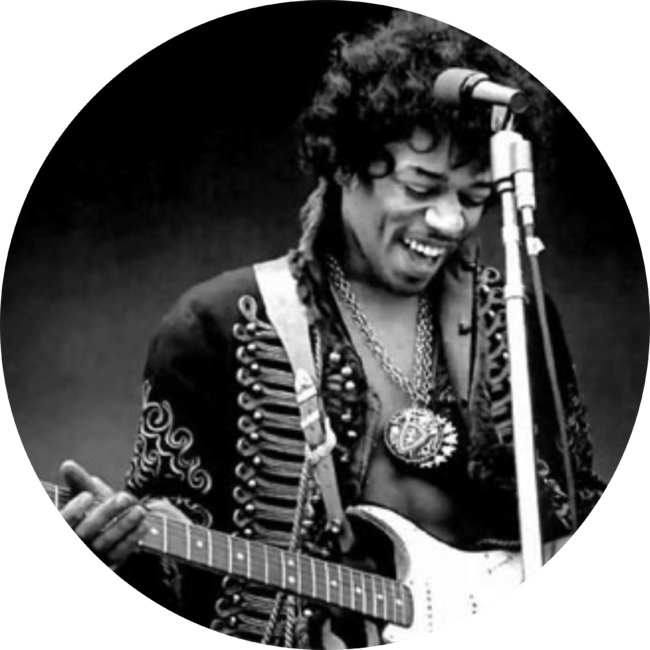
Jimi Hendrix
While left-handed guitars are available in the musical world today, Jimi Hendrix missed out on this opportunity.
He still chose to play his instrument as a leftie, but he had to flip a right-handed guitar to do it. Notice the pickguard is above the soundhole in pics of Jimi with his guitar. (Okay, we admit the flipped pickguard doesn’t look silly when it’s in this guitar icon’s hands.) Jimi Hendrix went on to write one of the 5 Best Guitar Solos of All Time.

Paul McCartney
Paul McCartney is another leftie who chose to flip the guitar on its head and restring it.
George Harrison may be the official lead guitarist of the Beatles. However, Paul certainly had some shining riffs and solos of his own. Some even argue that Paul is the better guitarist of the two. Whether you are Team George or Team Paul, it is undeniable that Paul McCartney is a gifted left-handed musician.

David Bowie
Although David Bowie was a leftie, he learned to play the guitar as a rightie.
Left-handed guitars were few and far between, so he decided to take the mainstream route. It doesn’t seem to have slowed down his career any!
Some lefties find it easier to use the dominant hand to finger chords since it is the naturally stronger hand. Whether you use your dominant hand to fret or strum, practice is what makes perfect in the long run.

Kurt Cobain
Kurt Cobain was a frontman for Nirvana and the face of 90s grunge rock.
He wrote and played drums right-handed, but when it came to guitar, he played as a lefty. Was he right-handed, left-handed, or ambidextrous? With Kurt Cobain, no one knows for sure. Cobain unsuccessfully for the perfect left-handed guitar and flipped several right-handed models. When he got into the spotlight, Fender designed a left-handed guitar just for him. That’s just one of the perks of being famous—and left-handed.
How to hold left-handed guitars.
The proper guitar position is a critical part of guitar playing, whether right-handed or left-handed.
The right hand’s job on left-handed guitars
As a beginner, it’s best to start sitting down with the guitar. Remember to keep your back straight and your feet on the floor. You can also raise one foot slightly to balance the guitar.
With a left-handed guitar, your right hand plays the frets. You don’t want to bend your wrist. Instead, keep the wrist straight and curve your fingers. Place your digit behind the fret bar to finger a chord. This finger position gives you the clearest sound. Play in the middle or on top of the fret can give you unwanted string buzz. Keep the thumb of your right hand upright and rest it on the back of the guitar neck for support.
The left hand’s job on left-handed guitars
On a left-handed guitar, the left-hand strums or picks the strings. First, get a comfortable grip on the pick. You should hold it between the first knuckle of your pointer and thumb. Keep your wrist straight and strum using your entire forearm. Generally, you want to land your strokes between the soundhole and bridge. However, you can experiment with different strums for unique sounds.
Check out How to Hold a Guitar Properly for more techniques on holding your guitar correctly. Just substitute the terms right and left with dominant and non-dominant to play a left-handed guitar.
The five best left-handed guitars on the market.
If you feel more comfortable strumming with your left hand and fretting with your right, a left-handed guitar may be for you. Here are some of our favorite options on the market for lefties:
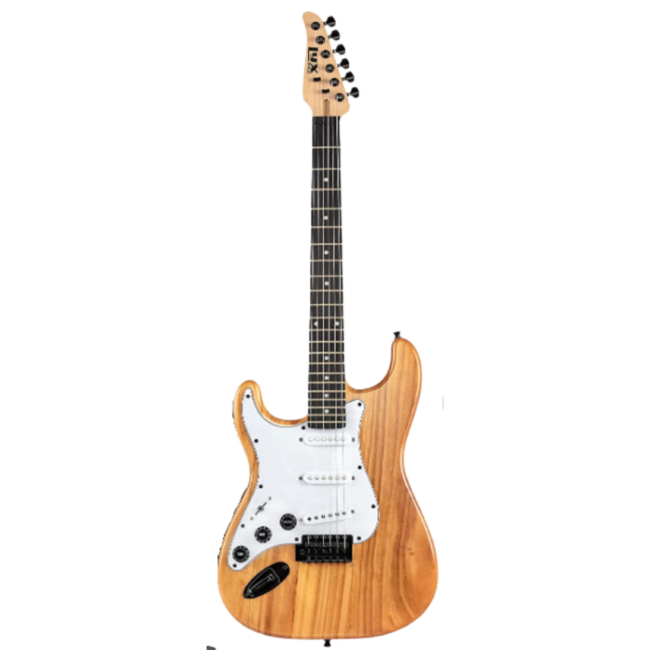
1. Best for beginners: Lyx Pro Left Hand 39-Inch Electric Guitar Starter Kit
This small-scale Lyx Pro electric guitar is perfect for beginning guitarists ten years old and up. The starter pack includes all the necessary equipment for a budding rockstar to begin his musical journey. The 39-inch guitar has a beautiful Canadian Maple top and rosewood fretboard. Its classic SSS pickup and 20-watt amplifier produce a satisfying sound for practicing at home. A headphone jack allows students to practice with a favorite song or a backup track. Extra amenities include a clip-on digital tuner, replacement strings, and an instruction booklet.
The Lyx Pro left-handed electric guitar is an affordable option for a beginning guitarist. This complete kit can make dreams become a reality.
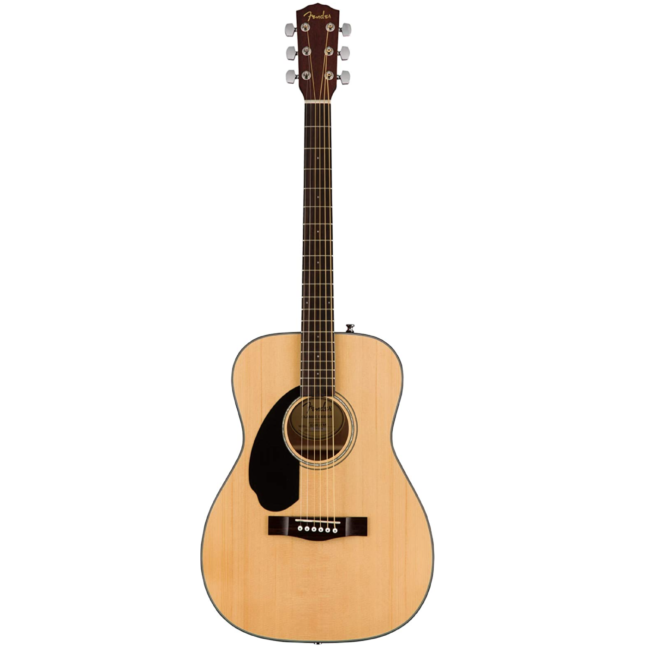
2. Best budget acoustic model: Fender CC-60S Left Hand Concert Acoustic Guitar
This concert Fender guitar is comfortable to hold and easy to play. Beginning guitarists can learn the fretboard and strum patterns as they play this small-scale concert guitar.
The classic dreadnought body with its spruce top is perfect for either strumming or fingerpicking. It gives off a rich sound without an amp.
This left-hand concert-size acoustic is an inexpensive model compared to many other left-handed guitars. However, the quality of the build and sound is everything you expect from the Fender brand.
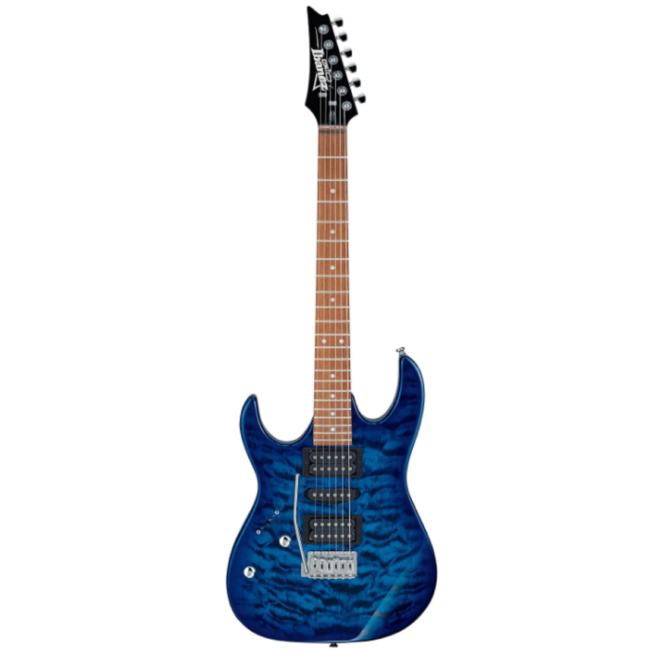
3. Best mid-range electric guitar: Ibanez GRX 6 String Solid-Body
The Ibanez brand builds a quality guitar that musicians love. However, they make models to fit into a variety of budgets. This mid-range Ibanez electric guitar looks snazzy on stage with its iridescent blue poplar guitar body. The New Zealand Pine fingerboard and white dot inlays give this guitar great aesthetic appeal. And the sound doesn’t disappoint. The infinity R humbucker pickups create a warm, high-output sound. You can also try out the 5-way selector switch and T106 tremolo to add a unique touch to your pieces. The great looks and sound quality of the Ibanez guitar make it a perfect choice for beginning or advanced leftie guitarists.
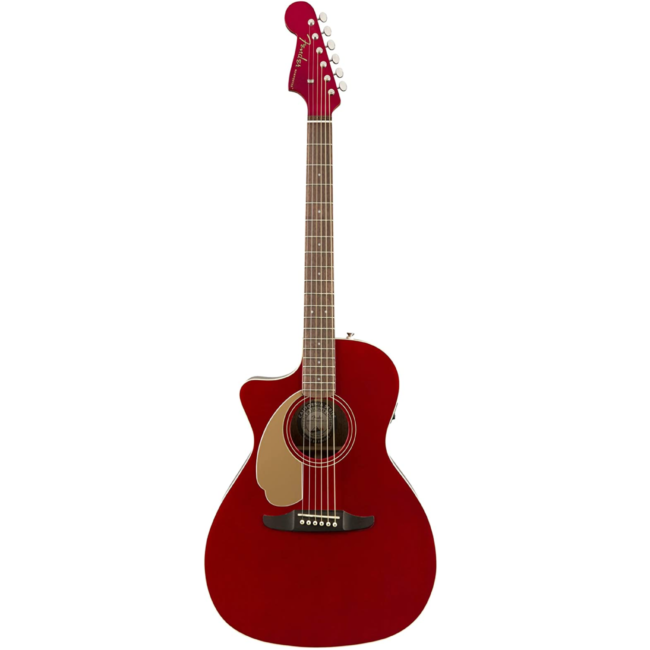
4. Best for performing: Candy Apple Red Fender Newporter
The Fender Newporter acoustic guitar has a sound you can take to the stage. The glossy solid spruce top with cream accents provides visual appeal. This lightweight instrument also packs in the sound with superior sound resonance and sustain. You can also plug in this instrument for added volume. However, the natural acoustic tones still shine through. You can play solo riffs with this instrument. Or, use it to back up a lead vocalist. Whether you go solo or join a band, this high-performing, unconventional instrument is ready to bring a sound that doesn’t disappoint.
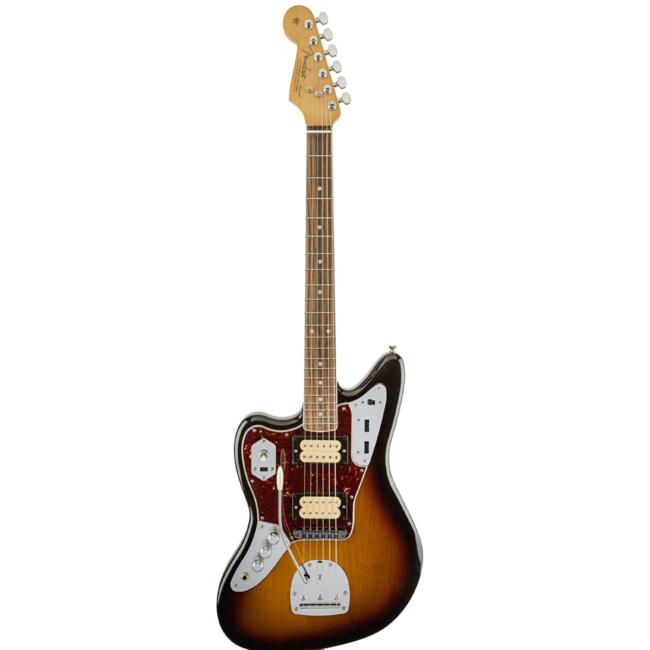
5. Best luxury model: Fender Kurt Cobain Jaguar
This mid-century style guitar is a carbon copy of the Fender 1965 Jaguar that Kurt Cobain played at the forefront of the band Nirvana. This luxury electric guitar has a solid alder body, metal accents, and pearlescent fret markers. Not only is it a gorgeous instrument, but it also includes a super distortion bridge pickup and a three-position toggle switch. Some extra perks are its hardshell case and an exclusive Fender book on Kurt Cobain. The Fender Kurt Cobain Jaguar is a professional instrument built for legends.
These are some of our top picks for left-handed electric and acoustic guitars. You can also check out some of our favorite right-handed kids’ guitars for comparison: Kids Guitar: How To Buy A Guitar For Children.
Left-handed guitars for the win.
For a leftie who wants to play the guitar, two roads diverge. You can choose to invest in a left-handed guitar or a right-handed design.
Whether you play a guitar upside down like Jimi Hendrix, right-handed like David Bowie, or decide on a left-handed guitar like Kurt Cobain, regular practice is key. You can build strength and grow your skills with the Simply Guitar app in as little as five minutes daily. This app takes you from the basics and lays a solid framework for more advanced material. Choose to try it free for two weeks and see if it works for you!









